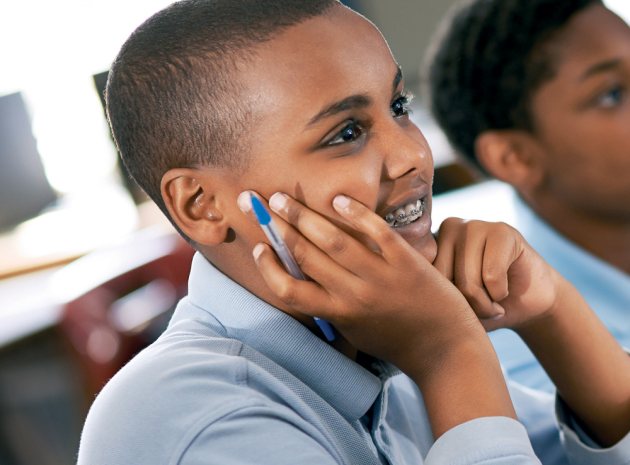Asking mathematical questions about the real world can help learners develop valuable thinking skills, says Colin Foster…
Asking mathematical questions about the real world can help learners develop valuable thinking skills, says Colin Foster…
Today you will…
Ask and answer mathematical questions about a photograph.
Mathematics teachers often say that ‘maths is all around us’, but how often does the stimulus for a mathematics lesson come from something in the real world? In this lesson, learners are invited to ask mathematical questions about a photograph taken in a car park.
Starter activity

Q: Where do you think this photograph was taken? What things do you notice about it? The photograph is clearly of a car park payment machine. Four denominations of coin are accepted and there is a limit of 25 coins for any one transaction.
Q: Why do you think they limit the number of coins that can be inserted?
Presumably this is so that the machine does not fill up too quickly and need emptying too often.
Q: What mathematical questions can you ask about this photograph?
If learners are not used to being asked to do this sort of thing, it may take some time before they come up with good questions. It might be worth asking learners to discuss possibilities in pairs for a few minutes before sharing their ideas
Over time, learners do get much better at asking interesting mathematical questions.
Whatever questions learners offer, write them up on the board – they can always pick and choose later which questions to work on, so it doesn’t matter if some questions don’t immediately seem to have much mathematical potential. (On the other hand, unpromising looking questions sometimes turn out to lead to interesting work.) You can of course include a question of your own if you wish.
Questions might relate to the limit of 25 coins (When would this limit become relevant or lead to a problem for the customer?) or to the numbers of possible ways of making different amounts of money (How many possible combinations of coins can you use to make £1?), or how long it would take to feed in the coins. There are many possibilities. When several questions have been written up on the board, it is time for learners to choose which question they will work on. You might be happy for different groups of learners to work on different questions, or the class could take a vote on which question to address in the lesson.
Q: In today’s lesson you are going to work on a question relating to the photograph and then at the end present your findings to the class. Which question do you think you would like to work on? If a very rich collection of questions emerges, then you might want to save some questions that you do not have time to address in this lesson and work on them in a future lesson.
Main activities
Investigation
Because you cannot know in advance exactly what questions learners will ask, it is hard to plan in detail for what will emerge, but once learners begin working on their questions that will give you some time to think about the mathematics as you circulate around the room. And if learners ask questions you hadn’t thought of and discover things you didn’t know, that is great! It is quite likely that learners will consider something to do with the numbers of coins needed to make different amounts of money. For example, learners might work out the number of different ways of making a certain amount of money, such as £1. (Or you could suggest this as a problem if you want a more closed starting point.) Another possible direction is to think about the least number of coins needed to make a certain range of total amounts. For instance, what is the fewest number of coins needed to make any amount (going up in 5p increments) from 5 pence to £5?
With this sort of work, learners will need to be very systematic to be sure that they haven’t missed any possibilities. Some logical thinking (and careful arithmetic) is needed to find all the possible ways. For instance, the table in the attached pdf shows all 50 ways of making £1 using the 5p, 10p, 20p, 50p, £1 and £2 coins allowed. By considering the cases in a sensible order, learners can be sure that they have covered them all.
You can see from the table in the atatched pdf that the total number of coins used can be any number between 1 and 20, except for 3. The number of different ways of making different amounts of money is shown in the atttached pdf.
As learners are working on their question, encourage them to write down what they are doing. Remind them that they are going to need to explain their answers, and how they got there, to the rest of the class later on. Learners might also ask additional questions relating to what they find out. For example, here they might notice that the number of ways of making 10n and 10n + 5 (where n is an integer) is always the same. This is because each combination of coins is exactly the same, just with one extra 5- pence piece.
Explanation
Invite groups to talk about what they did. There may not be time for every group to speak. In that case, choose groups who addressed very different questions or developed very different solutions. Encourage the rest of the class to listen carefully and ask questions about what is said.
Q: What did you find out? How did you go about it? What problems did you meet? How did you deal with them? Were you surprised by anything?
Home learning
Learners could be asked to use the camera on their mobile phones to photograph something in the real world that has, to them, a mathematical aspect. These photographs might be used in future lessons as a stimulus for asking mathematical questions. For instance, they could make for a very engaging classroom display, with space beside each photograph for learners to write in their possible questions. Sometimes learners bring in extremely interesting photographs, but it would be good to remind them to ask permission before taking photographs of people or private property.
maths resources from the ma
Check out a set of five Proof Posters for Key Stages 3 & 4 from The Mathematical Association. These colourful posters give a clear visual display of the language and structure of proof in the context of properties of angles and triangles. Topics covered are:
1) Angles at a point;
2) Angles and parallel lines;
3) Angles in a triangle;
4) Congruent triangles;
5) Proofs about angles and triangles.
Purchase your set for £14.99 from < ahref="http://www.m-a.org.uk" target="_blank">www.m-a.org.uk or telephone 0116 221 0014.
Info bar
Additional resources
For mathematical questions arising from photographs – and even videos – see 101qs.com. for problems arising from various images, see problempictures.co.uk and mathematicalbeginnings.com. i would also strongly recommend dan meyer’s blog at http://blog.mrmeyer.com.
Stretch them further
looking for and explaining the patterns found in this investigation is likely to be challenging for all learners. a very demanding possibility for extension, if learners have access to computer algebra software, would be to find the expansion of
1 / ( 1 - x5 ) ( 1 - x10) ( 1 - x20) ( 1 - x50)( 1 - x100 ) ( 1 - x200)
The number of ways of making £1, for instance, is given by the coefficient of x100 in this expansion. working out why there is this connection would take considerable thought and would be helped by thinking about a much simpler case. note that this formula does not take into account the limit of 25 coins.
About the expert
Colin Foster is a Senior Research Fellow in mathematics education in the School of Education at the University of Nottingham. He has written many books and articles for mathematics teachers (see www.foster77.co.uk)











Asking mathematical questions about the real world can help learners develop valuable thinking skills, says Colin Foster…